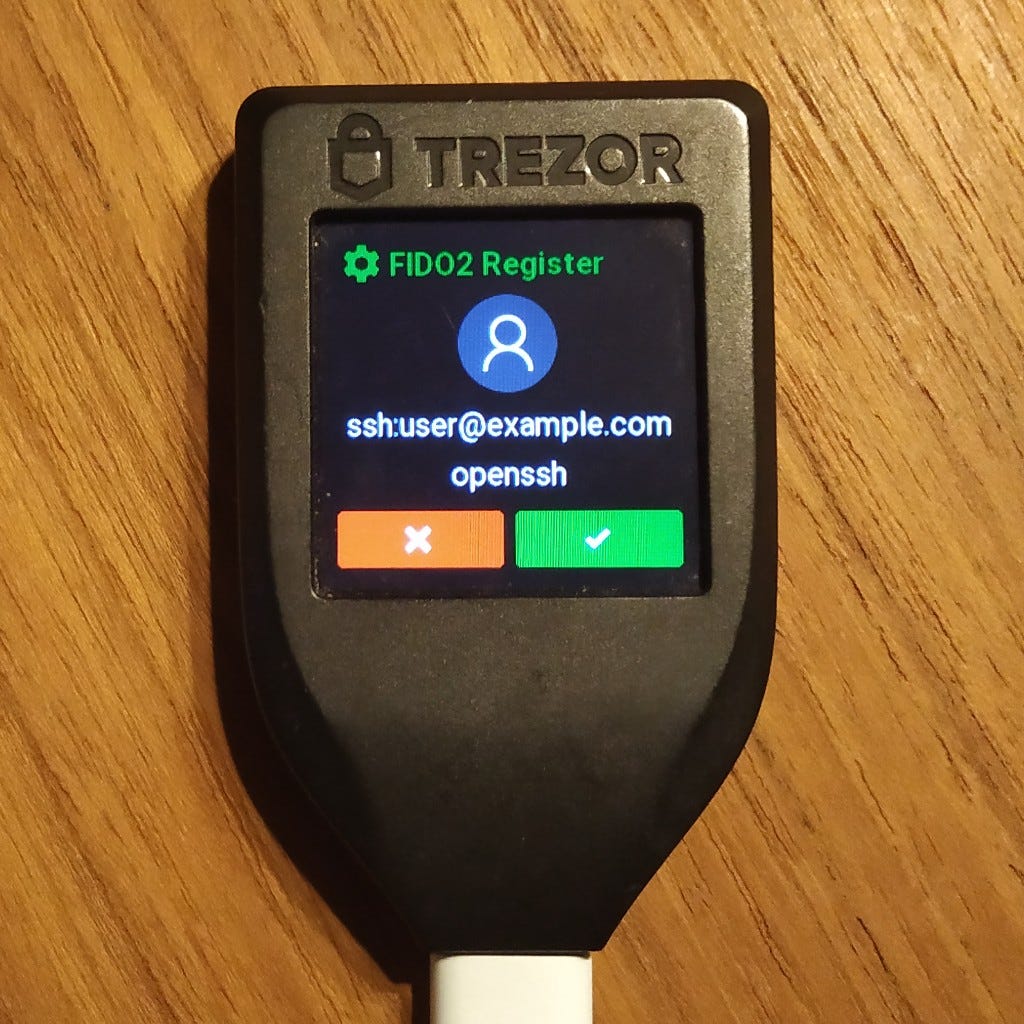Learn how your YubiKey can provide you passwordless logins to all your accounts while providng strong account security with FIDO2 authentication. Using a U2F/FIDO key with OpenSSH Introduction. The following article describes how a key deployment setup with Universal 2nd Factor (U2F) OpenSSH keys can look like. FIDO2 resident keys can be used. Hereby, the “key handle” part can be retrieved from the device itself. Citrix viewer ipad software.
From ssh-keygen: resident Indicate that the key should be stored on the FIDO authenticator itself. Resident keys may be supported on FIDO2 tokens and typically require that a PIN be set on the token prior to generation. Resident keys may be loaded off the token using ssh-add (1).
Version 8.3+ of OpenSSH is required for FIDO2 authentication to work on Windows. Unfortunately Windows typically uses an older version. As funny as it sounds, the simplest way to get the latest openSSH is to install git for windows. Prerequisites - OpenSSH SK WinHello. FIDO2 leverages devices to authenticate to online services via both mobile and desktop. FIDO2 specs are the W3C WebAuthn spec & FIDO Alliance’s CTAP.
SSH, also known as Secure Socket Shell, is a network protocol that provides administrators with a secure way to access a remote computer. SSH also refers to the suite of utilities that implement the protocol. Secure Shell provides strong authentication and secure encrypted data communications between two computers connecting over an insecure network. SSH is widely used by network administrators for managing systems and applications remotely, allowing them to log in to another computer over a network, execute commands and move files from one computer to another.
SSH with Trezor[edit]
OpenSSH with Trezor via FIDO2[edit]
You need to have libfido2 (version 1.3.0 or above) and OpenSSH (version 8.2 or above) installed on your client. OpenSSH needs to be compiled with the --with-security-key-builtin option enabled. For the server, you just need to have OpenSSH (version 8.2 or above) installed.
It might take some time until these versions are packaged in your Linux distribution, but this will happen eventually. Some distributions such as Fedora, NixOS, and Debian have this functionality already in their pipeline.
Once you have everything set up properly you can issue the following command to generate a key pair backed by your hardware token (“ecdsa” stands for “elliptic curve digital signature algorithm” and “sk” stands for “security key”):
ssh-keygen -t ecdsa-sk
If you are using Trezor Model T, you should see a screen like this:
As you can see from the photo, FIDO2 relying party ID is set to ssh: and FIDO2 user ID is set to openssh.
Typora online. In case you want to use a different key for every server, you can modify the FIDO2 relying party ID via the -O application flag:
ssh-keygen -t ecdsa-sk -O application=ssh:[email protected]
Once you confirm this screen, two files will be created: ~/.ssh/id_ecdsa_sk and ~/.ssh/id_ecdsa_sk.pub. The contents of the .pub file can be added to ~/.ssh/authorized_keys on the server just like you are used to. Once you do this, the OpenSSH will take care of the rest and next time you’ll try to login to that server, you’ll be prompted with the FIDO2 dialog on your device.
While following the instructions above, you might have noticed the ~/.ssh/id_ecdsa_sk file was generated in the process. This file does not contain a private key (like it usually does for other key methods), but it contains a FIDO2 credential required to reconstruct the private key inside of the hardware token. You need to keep this file on your client if you want to be able to log in from this machine.
OpenSSH with Trezor via trezor-agent[edit]



It is also possible to use the Trezor device with an SSH agent. See Apps:SSH agent.
See also NIST256P1, Ed25519
Sources:
Openssh Fido2 How To
- https://it.umn.edu/secure-shell-ssh
Openssh Fido2 Yubikey
